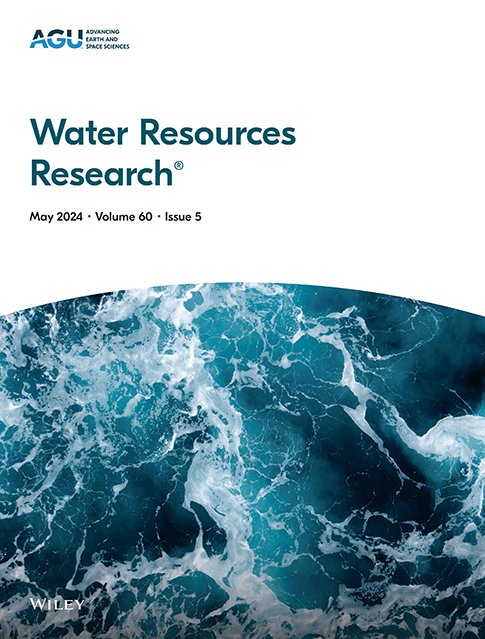Causal Attribution of the Interannual Variability in Flood Peaks Through Bayesian Networks
IF 4.6
1区 地球科学
Q2 ENVIRONMENTAL SCIENCES
引用次数: 0
Abstract
Classical regression models, due to the limited computational expense and good performance, can be used for the attribution of interannual variability in flood peaks. However, these models capture the relation between predictand (i.e., flood peaks) and predictors (i.e., climate variables), suffering from the disconnect between correlation and causation. Here, we utilize a causal Bayesian Network model to establish causal relationships between flood peaks and basin- and season-averaged precipitation and temperature, which were found to be useful predictors in previous regression-based attribution studies. We develop these models for seasonal flood peaks for 3,884 gauges across the conterminous Unites States, achieving a median Spearman's rank correlation above 0.7. By performing do-calculus intervention on the predictors, we found a strong causal relationship between seasonal maximum daily discharge and both concurrent and lagged season-precipitation and temperature, consistent with underlying physical processes across different basins. The Bayesian Network model effectively predicts the interannual variability in seasonal and annual peak discharges and establishes a causal link between them. The model identifies key drivers across different seasons and regions in CONUS and highlights that antecedent catchment wetness is particularly relevant for high magnitude flows, while precipitation is the dominant driver of medium flows. This study significantly expands our current knowledge on causal flood drivers and presents a novel approach to flood prediction and attribution.基于贝叶斯网络的洪峰年际变化的因果归因
经典回归模型计算量小,性能好,可用于洪峰年际变化的归因。然而,这些模型捕捉了预测物(即洪峰)和预测物(即气候变量)之间的关系,而相关性和因果关系之间存在脱节。在此,我们利用因果贝叶斯网络模型建立洪峰与流域和季节平均降水和温度之间的因果关系,这些在以前基于回归的归因研究中被发现是有用的预测因子。我们为美国相邻地区的3884个测量表开发了这些季节性洪峰模型,获得了0.7以上的斯皮尔曼秩相关中值。通过对预测因子进行计算干预,我们发现季节最大日流量与同期和滞后季节降水和温度之间存在很强的因果关系,这与不同流域的潜在物理过程相一致。贝叶斯网络模型有效地预测了季节和年峰值流量的年际变化,并建立了两者之间的因果关系。该模型确定了CONUS不同季节和地区的关键驱动因素,并强调先前的流域湿度与高强度流量特别相关,而降水是中等流量的主要驱动因素。这项研究极大地扩展了我们目前对洪水因果驱动因素的认识,并提出了一种新的洪水预测和归因方法。
本文章由计算机程序翻译,如有差异,请以英文原文为准。
求助全文
约1分钟内获得全文
求助全文
来源期刊

Water Resources Research
环境科学-湖沼学
CiteScore
8.80
自引率
13.00%
发文量
599
审稿时长
3.5 months
期刊介绍:
Water Resources Research (WRR) is an interdisciplinary journal that focuses on hydrology and water resources. It publishes original research in the natural and social sciences of water. It emphasizes the role of water in the Earth system, including physical, chemical, biological, and ecological processes in water resources research and management, including social, policy, and public health implications. It encompasses observational, experimental, theoretical, analytical, numerical, and data-driven approaches that advance the science of water and its management. Submissions are evaluated for their novelty, accuracy, significance, and broader implications of the findings.
 求助内容:
求助内容: 应助结果提醒方式:
应助结果提醒方式:


